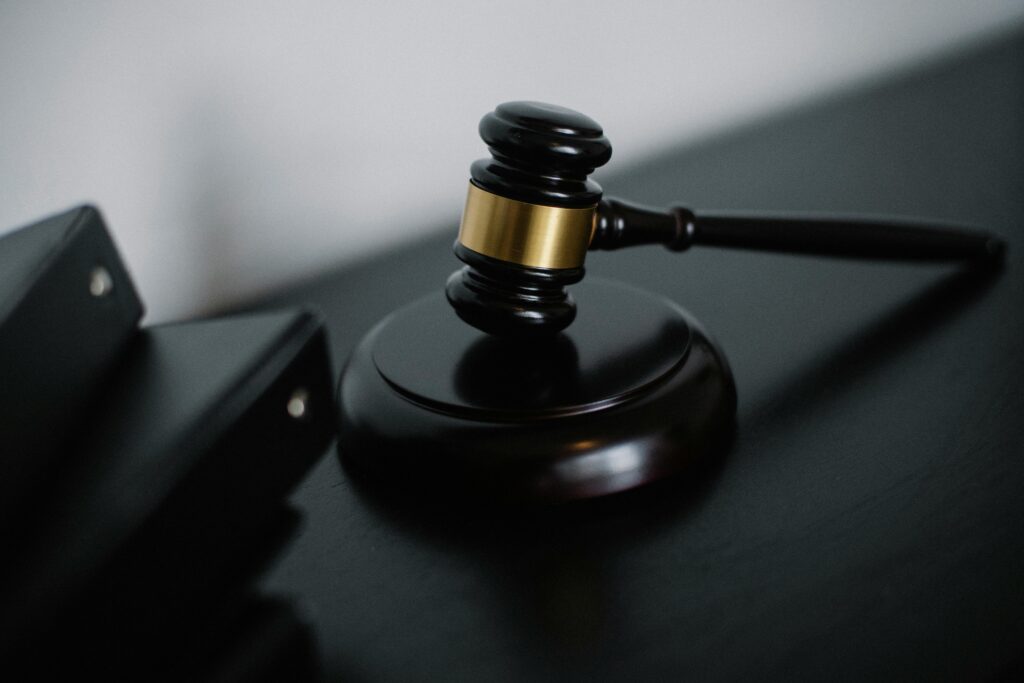Published On: September 4th 2025
Authored By: Vaishnavi Shukla
Arya Kanya Degree College,
University of Allahabad, Prayagraj
Citation: 1994 AIR 1918, 1994 SCC (3) 1
Background
In 1989, the Congress-led central government dismissed the Janata Dal government in Karnataka by invoking President’s Rule. This action followed a recommendation from then-Governor P. Venkatasubbaiah, who claimed to have received letters from 19 MLAs withdrawing support to Chief Minister S.R. Bommai. The Governor justified his recommendation on two grounds: first, that Bommai no longer held the confidence of the majority in the Assembly, and second, that no alternative party was capable of forming a government. However, the dismissal sparked widespread controversy. The Supreme Court later observed that the Governor had not consulted Bommai before making his report to the President. Interestingly, seven of the 19 legislators later recanted, alleging that their signatures on the withdrawal letters were obtained through deceit. In response, Bommai challenged the dismissal in the Karnataka High Court, which ruled against him. He subsequently appealed to the Supreme Court, which formed a nine-judge bench to hear the case.
Facts
S.R. Bommai served as the Chief Minister of Karnataka from August 1988 until April 1989, heading a Janata Dal-led government. His tenure came to an abrupt end when President’s Rule was imposed in the state under Article 356 of the Indian Constitution on April 21, 1989. The sequence of events leading to this development began when the Governor of Karnataka received letters from 19 ministers stating that they were withdrawing their support from the government. Interpreting this as a loss of majority for the ruling party, the Governor sent a report to the President of India highlighting the council’s defection and recommended the dismissal of the state government.
Mr. Bommai, however, disputed this move. The very next day, seven of the 19 ministers clarified that their letters had been misrepresented. In response, Bommai, along with the state’s Law Minister, attempted to prove their majority on the floor of the Assembly. Nevertheless, the Governor submitted a second report to the President on the same day, asserting that Bommai no longer enjoyed the confidence of the House and advised imposition of President’s Rule. Acting on this advice, the President dissolved the state government and declared an emergency in Karnataka.
Challenging this proclamation, S.R. Bommai and members of his cabinet filed a writ petition in the Karnataka High Court, questioning the constitutional validity of the President’s action. The Union of India defended the decision, and the High Court, in a judgment delivered by a three-judge bench, upheld the dismissal. The Court ruled that the Governor’s report was based on relevant facts and that his satisfaction could not be questioned in the absence of allegations of bad faith. It also held that a floor test in the Assembly was not mandatory, nor was it necessary to forward the Governor’s report to the President. Referring to the precedent set in State of Rajasthan v. Union of India, the Court emphasized that the President’s satisfaction under Article 356 could not be judicially reviewed.
As the decision was challenged further, the matter was taken up by the Hon’ble Supreme Court of India. Similar legal issues had arisen in other states including Meghalaya, Nagaland, Madhya Pradesh, Rajasthan, and Himachal Pradesh. All these matters were clubbed together and examined by a Constitution Bench comprising nine judges of the Supreme Court, culminating in the landmark judgment in the S.R. Bommai v. Union of India case.
Key legal Issues
One of the most significant legal questions in the S.R. Bommai case was whether the President’s decision to impose President’s Rule under Article 356 could be scrutinized by the judiciary. This brought into focus the extent of judicial review, especially in cases where such proclamations were suspected to be based on irrelevant, inadequate, or politically motivated grounds. The Supreme Court was asked to determine whether the courts could intervene if the exercise of power under Article 356 appeared to be mala fide or unconstitutional.
Another central issue revolved around the role of the floor test in determining the majority support of a government. The Bommai case challenged the Governor’s action in recommending dismissal of the government without first allowing the Chief Minister to prove his majority in the Legislative Assembly. Since a floor test is the accepted constitutional method for establishing legislative support, the Court had to evaluate whether bypassing this step undermined democratic principles.
The Governor’s discretionary powers and their constitutional boundaries were also questioned. The case examined whether the Governor’s report recommending President’s Rule was impartial and based on genuine facts. It was important to assess whether the Governor acted within his constitutional authority or if his discretion was exercised arbitrarily, especially without affording the government an opportunity to demonstrate its strength in the House.
The case further raised concerns about federalism and the potential misuse of Article 356. There were allegations that the central government was using this constitutional provision as a political tool to dismiss state governments run by opposition parties. This called for a re-examination of safeguards necessary to protect the autonomy of state governments and uphold the federal balance envisioned by the Constitution.
Another major point of contention was the consequence of an unconstitutional proclamation under Article 356. The Court had to consider whether a dismissed government and a dissolved legislative assembly could be legally restored if the proclamation was later found to be invalid. This issue held critical importance in determining the real-world impact of a judicial verdict striking down such a proclamation.
Lastly, the case explored the justiciability of the President’s satisfaction in issuing a proclamation. The Court deliberated whether such satisfaction was final and beyond question or if it must be backed by credible, objective material that could be reviewed by the judiciary. This issue was pivotal in defining the checks and balances between constitutional authorities and reinforcing the accountability of executive actions.
Judgement
In its landmark verdict in the S.R. Bommai v. Union of India case, the Supreme Court of India unanimously ruled that the President’s proclamation under Article 356 is not immune from judicial review. The Court held that such a proclamation can be challenged and struck down if found to be unconstitutional, mala fide, based on irrelevant or extraneous grounds, fraudulent, or an abuse of power. Although the subjective satisfaction of the President — meaning his personal opinion on whether the constitutional machinery in a state has failed — cannot be questioned, the objective material on which the satisfaction is based is open to judicial scrutiny.
The Court also laid down clear procedural safeguards to prevent arbitrary use of Article 356. It ruled that the proclamation must receive the approval of both Houses of Parliament before it can be extended beyond two months. Until that approval is secured, the President may only suspend the legislative assembly, but cannot dissolve it outright. This ensures that executive action under Article 356 is subject to democratic oversight. If Parliamentary approval is not granted within the stipulated time frame, the dismissed state government must be reinstated automatically.
Moreover, the judgment established a constitutional boundary between the powers of the Union and the autonomy of the states, thereby reinforcing the federal structure. The Supreme Court emphasized that the Governor’s role must be impartial and constitutionally guided, and that the legislative majority should be tested on the floor of the House, not through subjective reports.
This decision marked a significant shift in Indian constitutional law, particularly with respect to center-state relations. Prior to the judgment, Article 356 had often been misused to dislodge opposition-led state governments. The Bommai verdict sent a strong message against such political misuse and emphasized that President’s Rule is an extraordinary measure, not to be used for political convenience.
The impact of this ruling is evident in the statistics. Between 1950 and 1994, Article 356 was invoked nearly 100 times, averaging about 2.5 times per year. However, in the period after the Bommai judgment, from 1995 to 2021, the frequency declined sharply, with President’s Rule being imposed only 29 times, averaging slightly over once per year. This decline reflects the judiciary’s influence in curbing executive overreach and upholding democratic principles.
Impact of the case
The 1994 judgment in S.R. Bommai v. Union of India stands as a milestone in Indian constitutional jurisprudence. It significantly shaped the principles of federalism, democratic integrity, and limitations on the application of Article 356 (related to President’s Rule). The following points highlight its major implications:
1. President’s Rule Open to Judicial Scrutiny
- The Supreme Court held that Article 356’s invocation is not beyond the scope of judicial examination.
- This implies that the President’s proclamation can be legally contested if it appears to be unreasonable, biased, or motivated by bad faith.
2. Assembly Majority Must Be Proven on the Floor
- The ruling made it clear that the validity of a government’s majority must be demonstrated through a floor test within the State Legislative Assembly.
- This ruling curtailed the arbitrary removal of state governments based merely on the Governor’s personal or political assessment.
3. Secularism Upheld as a Core Constitutional Value
- The Court reaffirmed that secularism forms an essential part of India’s constitutional identity.
- It observed that any non-secular practices or policies by a State government could serve as legitimate grounds for imposing President’s Rule, as they threaten the basic structure of the Constitution.
4. Reinforcement of Federal Principles
- The judgment played a crucial role in protecting the federal balance by checking the Central Government’s authority to arbitrarily dismiss State governments.
- It acted as a constitutional shield to prevent political misuse of Article 356.
Conclusion
The S.R. Bommai verdict stands as a turning point in India’s constitutional and political evolution. By laying down clear limitations on the application of Article 356, the Supreme Court reinforced the principles of federalism and democratic governance, safeguarding state autonomy within the Indian Union.
References
- S.R. Bommai v. Union of India, AIR 1994 SC 1918. https://indiankanoon.org/doc/60799/
- S.R. Bommai Judgement (1994). Vision IAS Monthly Magazine – Polity and Governance, 15 April 2024. Available at: https://visionias.in/current-affairs/monthly-magazine/2024-04-15/polity-and-governance/sr-bommai-judgement-1994




